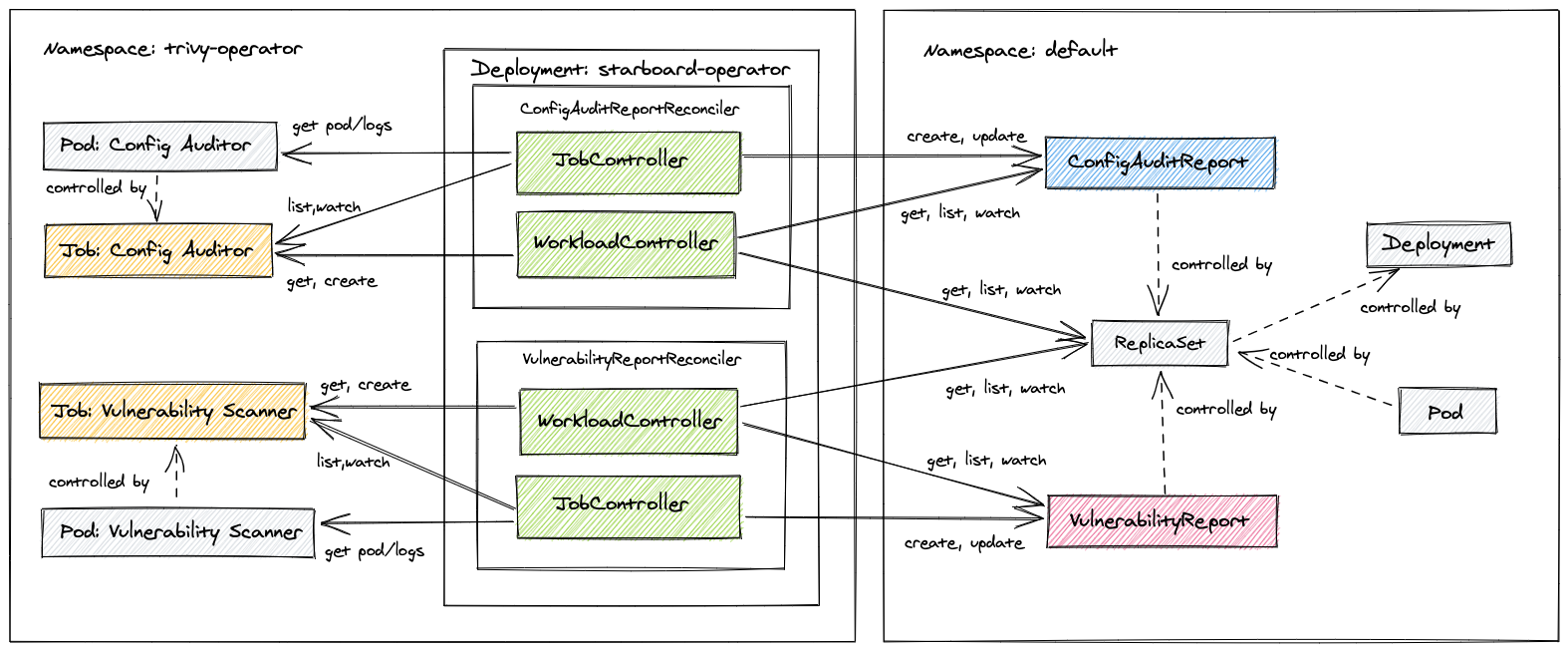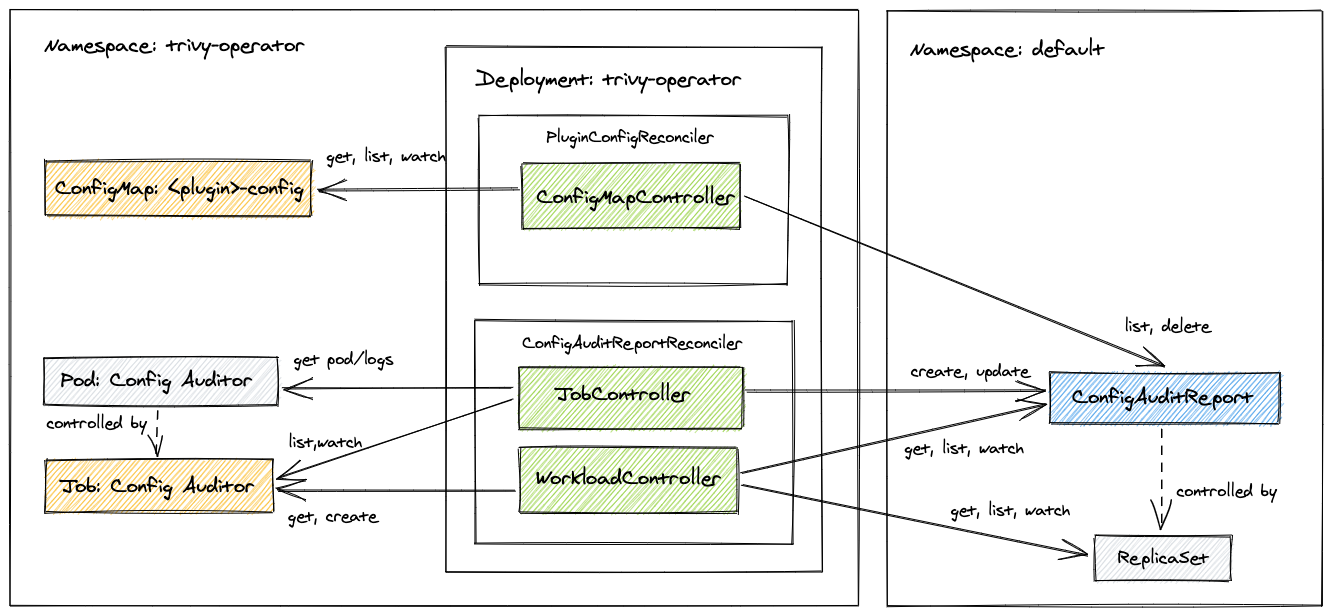Trivy Operator Usage
This section details the different types of Kubernetes workload scanning provided by the Trivy Operator. Namely:
- Vulnerability Scans
- Configuration Auditing
- Complaince Report
- The different CRD reports that are generated by the Trivy Operator
Trivy Operator Behaviour and Design Patterns
Once the Trivy Operator is installed to a Kubernetes cluster, it will start monitoring the cluster resources. Whenever the Operator detects new or changed resources, it will generate a security scan on those resources.

Every Kubernetes Operator defines a desired state. The Operator then works towards creating that state. In the case of the Trivy Operator, the desired state is to generate a security report for every Kubernetes workload in the cluster. The security report is stored as a Custom Resource Definition (CRD).
Beyond that, the Trivy Operator takes advantage of Kubernetes garbage collector
to automatically delete stale reports and trigger rescan. For example, deleting a ReplicaSet will delete its VulnerabilityReports, whereas deleting a VulnerabilityReport owned by a ReplicaSet will rescan that ReplicaSet and
eventually recreate the VulnerabilityReport.
Rescan is also triggered whenever the configuration of a configuration audit plugin has changed. For example, when a new OPA policy script is added to the Confest plugin config. This is implemented by adding the label named plugin-config-hash
to ConfigAuditReport instances. The plugins' config reconciler watches the ConfigMap that holds plugin settings
and computes a hash from the ConfigMap's data. The hash is then compared with values of the plugin-config-hash labels.
If hashes are not equal then affected ConfigAuditReport objects are deleted, which in turn triggers rescan - this time
with new plugin's configuration.

What's Next?
- If you haven't done it yet, install the operator and follow the Getting Started guide.